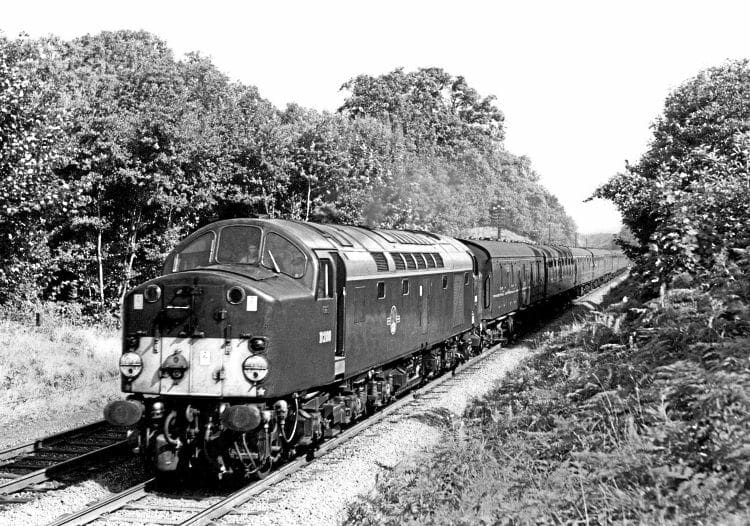Sixty years ago, the first Class 40 – or English Electric Type 4 as it was then known – was released from Vulcan Foundry. David Russell tells the story of ‘Green Goddess’ No. D200, which has now notched up 30 years in preservation as part of the National Collection.
THE British Railways Modernisation Plan of 1955 included orders from four manufacturers for ‘big’ Type 4 locos. English Electric’s offering used a Mk.2 version of its 16-cylinder SVT power unit rated at 2,000hp, a development of the Mk.1 type that had been used in the previous LMS (Nos. 10000 and 10001) and SR (Nos. 10201-10203) prototypes that emerged in the late 1940s and early 1950s.
The initial order was for 10 locos, the first of which, No. D200, emerged from EE’s Vulcan Foundry at Newton-le-Willows in March 1958 with the other nine (Nos. D201-209) following over the next six months.
Enjoy more Rail Express Magazine reading every month.
Click here to subscribe & save.

Follow on orders saw a further 190 examples built at Vulcan Foundry – with the exception of 20 (Nos. D305-324) at the RSH plant in Darlington – and delivered between 1959 and 1962. The 10 pilot scheme EE Type 4s were allocated to the Eastern Region’s London depots, being based at Stratford (Nos. D200/202-205) and Hornsey (Nos. D201/206-209).
Following its release in March 1958, No. D200 ran to Doncaster Works from where it undertook a number of test runs. Movement south to Stratford took place on April 11, and over the next few days it undertook several outings to Cambridge.
The loco’s first passenger working was on April 18, 1958 when, carrying a headboard proclaiming ‘First 2000hp diesel London-Norwich’, it departed Liverpool Street at 10.27 and, with a stop at Ipswich, had a schedule of under two hours – unheard of in steam days! No. D201 was also displayed at Liverpool Street on the day. Fittingly, when No. D200 was retired from BR service 30 years later in April 1988, its final tour included a run from Liverpool Street to Norwich.
Following the delivery of Nos. D202-205, the locos settled down on passenger duties, largely on the Liverpool Street-Norwich route, but also including visits to other destinations such as Cambridge and Great Yarmouth. In June 1959, all five were reallocated to Norwich, but they returned to Stratford five months later. By 1963, No. D200 had gained a small yellow warning panel.
Despite their good reliability, the EE Type 4s suffered from being
under-powered – hardly surprising given their weight of 132 tons. As a result, January 1965 was to see the introduction of more powerful Brush Type 4 traction (or Class 47s as they were to later become) on a large number of passenger workings in East Anglia.
Read more News and Features in the April issue of RE – on sale now!




